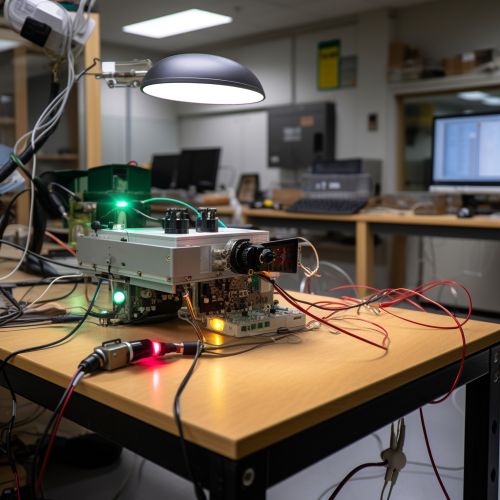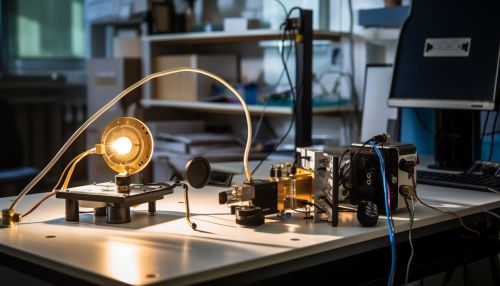Wavefront sensor
Introduction
A Wavefront sensor is a device used in optical physics and astronomy to measure the distortions in a wavefront. Wavefront sensors play a crucial role in wavefront sensing and adaptive optics systems. They are used in a variety of fields, including laser physics, adaptive optics in astronomy, and medical imaging.
History
The concept of wavefront sensing was first introduced in the 19th century by French physicist Augustin-Jean Fresnel. He developed the Fresnel diffraction equation, which describes how a wavefront propagates. The first practical wavefront sensor, the Hartmann-Shack sensor, was developed in the 20th century.
Types of Wavefront Sensors
There are several types of wavefront sensors, each with its unique characteristics and applications.
Hartmann-Shack Sensor
The Hartmann-Shack sensor, also known as a Hartmann sensor, is the most common type of wavefront sensor. It consists of an array of small lenses (lenslets) that focus incoming light onto a detector. The position of the focal spot on the detector provides information about the local slope of the wavefront.
Shearing Interferometer
A Shearing interferometer is another type of wavefront sensor. It splits the incoming wavefront into two slightly displaced copies that interfere with each other. The resulting interference pattern provides information about the gradient of the wavefront.
Pyramid Sensor
The Pyramid sensor is a relatively new type of wavefront sensor. It uses a four-faced pyramid to split the incoming wavefront into four separate beams. These beams are then recombined to form an interference pattern that provides information about the wavefront's slope.
Applications
Wavefront sensors have a wide range of applications in various fields.
In Astronomy
In astronomy, wavefront sensors are used in adaptive optics systems to correct for the distortions caused by the Earth's atmosphere. This allows astronomers to obtain sharper images of celestial objects.
In Laser Physics
In laser physics, wavefront sensors are used to measure and correct the wavefront distortions in high-power laser systems. This is crucial for applications such as laser cutting and laser welding, where a precise control of the laser beam is required.
In Medical Imaging
In medical imaging, wavefront sensors are used in ophthalmology to measure the aberrations in the human eye. This information is used to design custom contact lenses and to guide laser eye surgery.
See Also


